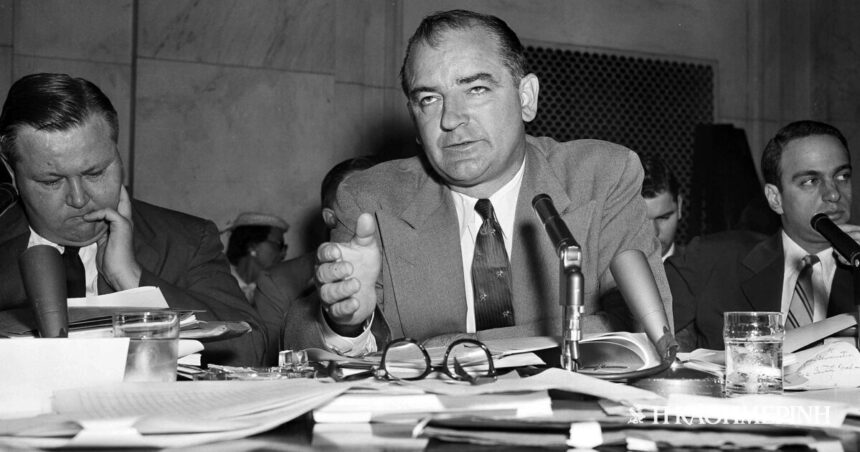In the years following the end of World War II, in an era dominated by the Cold War and McCarthyism in the US, the US House Un-American Activities Committee was tasked with investigating the existence of elements of subversive ideology on screen, as it had to stop the channeling of socialist views into American cinemas. Over 40 actors, screenwriters, directors and producers were ordered to appear before the committee for questioning.
However, 10 refused to cooperate with authorities at the hearings, refusing to answer questions about whether they were or had ever been members of the Communist Party. The artists denounced these questions as a violation of their rights under the First Amendment to the United States Constitution, which among other things protects freedom of speech. As a result of their stance, Albert Maltz, Dalton Trumbo, John Howard Lawson, Samuel Ornitz, Ring Lardner Jr., Lester Cole, Alvah Bessie, Herbert Biberman, Edward Dmytryk, and Robert Adrian Scott were charged with contempt of Congress.
The chairman of the Un-American Activities Committee, J. Parnell Thomas, rejected the arguments that had been made, arguing that Congress had every right to ask questions about their political beliefs, since the Constitution was never intended to cover or shield those who they would destroy it. That report, which was a criminal charge, eventually led to a highly publicized trial after the charges were upheld by the Supreme Court. The defendants were sentenced to up to one year in prison and fined $1,000.
The 10 defendants, who became known as the “Hollywood 10”, would have other effects as well. More specifically, their targeting prompted a group of studio executives, acting under the auspices of the Motion Picture Producers Guild, to fire the artists in question, making what became known as the “Waldorf Declaration” – as the announcement was made via a news release. at the end of the meeting of the major film producers at the Waldorf-Astoria Hotel. With this particular statement, the producers not only condemned those artists involved in this case, effectively ostracizing them from the film industry, but, at the same time, established mandatory loyalty oaths from their employees.
The impact of these categories, therefore, was not only immediate but also long-lasting. Hollywood quickly created the so-called “blacklist,” a list of names of Hollywood personalities suspected of having communist ties. The “blacklist” functioned as a means of threat to protect against the communist threat. Those on this list could rarely find work in films. In doing so, however, it also created another negative effect on the Hollywood film industry, as producers, directors and writers avoided addressing any topic that could potentially be considered controversial or expose them to accusations of being “soft” on to communism – resulting in a strong introversion.
The 1947 “blacklist” case would only be the first. Other examples would follow in the 1950s and also in the 1960s, so there would no longer be anything similar.
Column editor: Myrto Katsigera, Vassilis Minakakis, Antigoni-Despina Poimenidou, Athanasios Syroplakis








